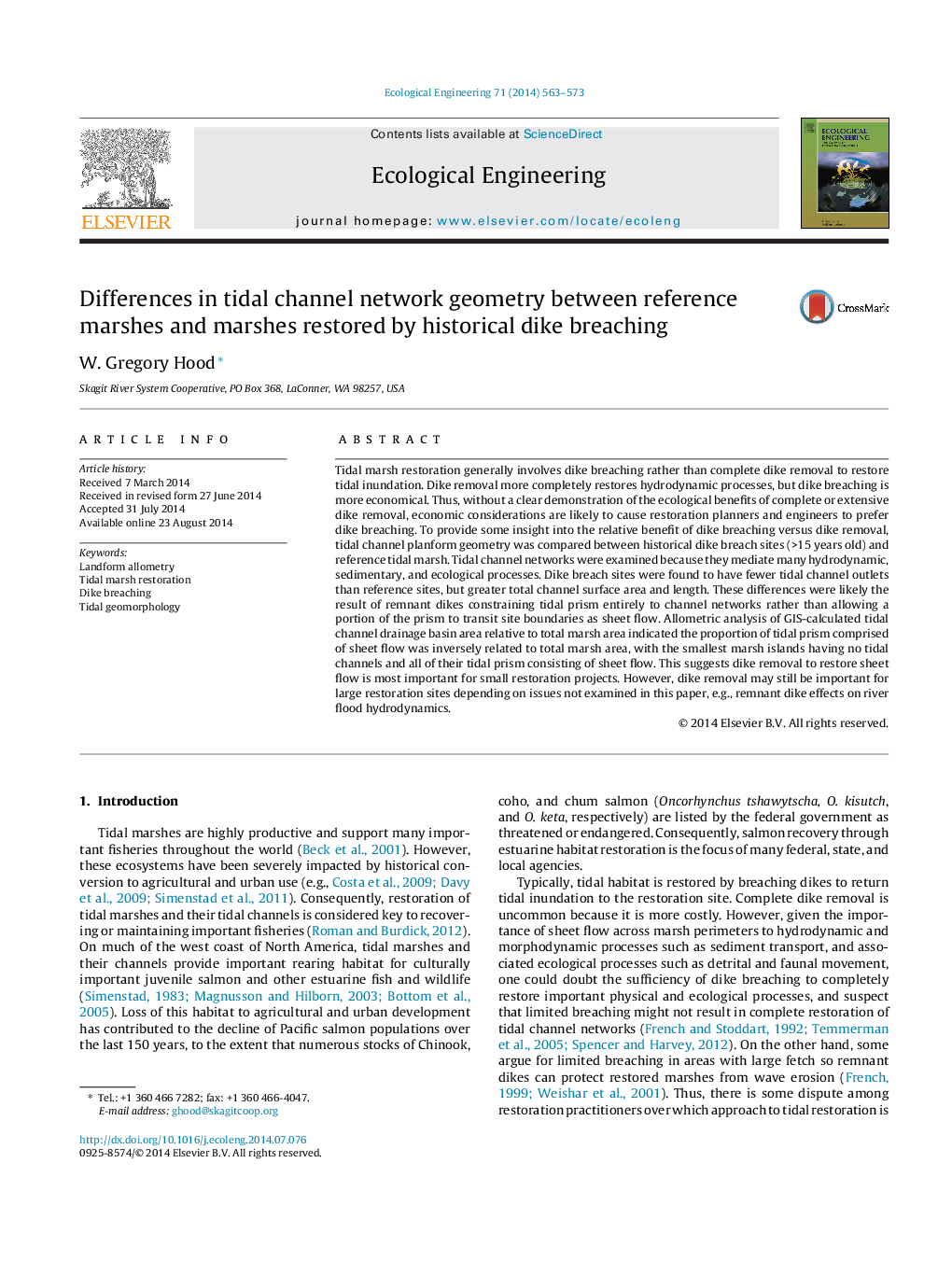| کد مقاله | کد نشریه | سال انتشار | مقاله انگلیسی | نسخه تمام متن |
|---|---|---|---|---|
| 4389196 | 1618028 | 2014 | 11 صفحه PDF | دانلود رایگان |
• Historical dike breach tidal marsh had more total channel length than reference sites.
• Historical dike breach tidal marshes had more total channel area than reference sites.
• Historical dike breach tidal marshes had fewer channel outlets than reference sites.
• Tidal prism partitioning between channelized and sheet flow depends on marsh size.
• Dike removal to restore sheet flow is likely more important for marshes <72 ha.
Tidal marsh restoration generally involves dike breaching rather than complete dike removal to restore tidal inundation. Dike removal more completely restores hydrodynamic processes, but dike breaching is more economical. Thus, without a clear demonstration of the ecological benefits of complete or extensive dike removal, economic considerations are likely to cause restoration planners and engineers to prefer dike breaching. To provide some insight into the relative benefit of dike breaching versus dike removal, tidal channel planform geometry was compared between historical dike breach sites (>15 years old) and reference tidal marsh. Tidal channel networks were examined because they mediate many hydrodynamic, sedimentary, and ecological processes. Dike breach sites were found to have fewer tidal channel outlets than reference sites, but greater total channel surface area and length. These differences were likely the result of remnant dikes constraining tidal prism entirely to channel networks rather than allowing a portion of the prism to transit site boundaries as sheet flow. Allometric analysis of GIS-calculated tidal channel drainage basin area relative to total marsh area indicated the proportion of tidal prism comprised of sheet flow was inversely related to total marsh area, with the smallest marsh islands having no tidal channels and all of their tidal prism consisting of sheet flow. This suggests dike removal to restore sheet flow is most important for small restoration projects. However, dike removal may still be important for large restoration sites depending on issues not examined in this paper, e.g., remnant dike effects on river flood hydrodynamics.
Journal: Ecological Engineering - Volume 71, October 2014, Pages 563–573
